After five days stuck under a period of low pressure I took a gamble on Wednesday, and was glad that I did so. Despite threatening cloud and strong gusts I had an agenda; to find me some Common Emerald and, if lucky, a Black Darter.

The Emeralds were easy to find; exactly where they should be, although staying low out of the breeze and not as many as I expected.
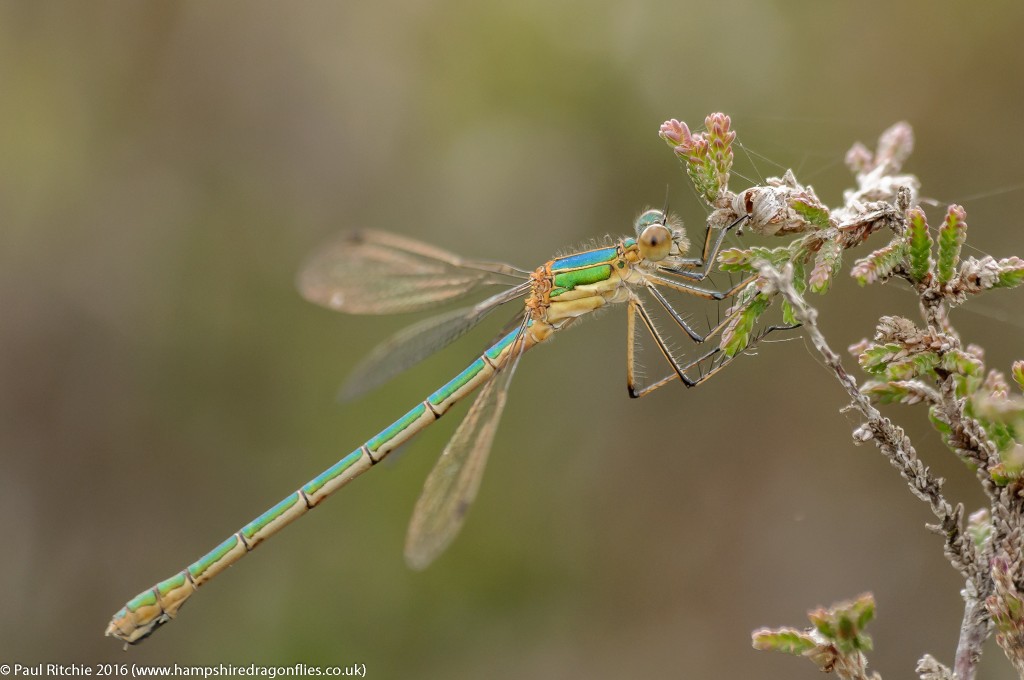
Even harder to pin down were the Small Red. Once they rose they disappeared, seemingly into another dimension. The welcome sight of a few Scarce Chasers kept me on my toes, and, despite their citrus appearance, they were also hard to follow once they caught the breeze.
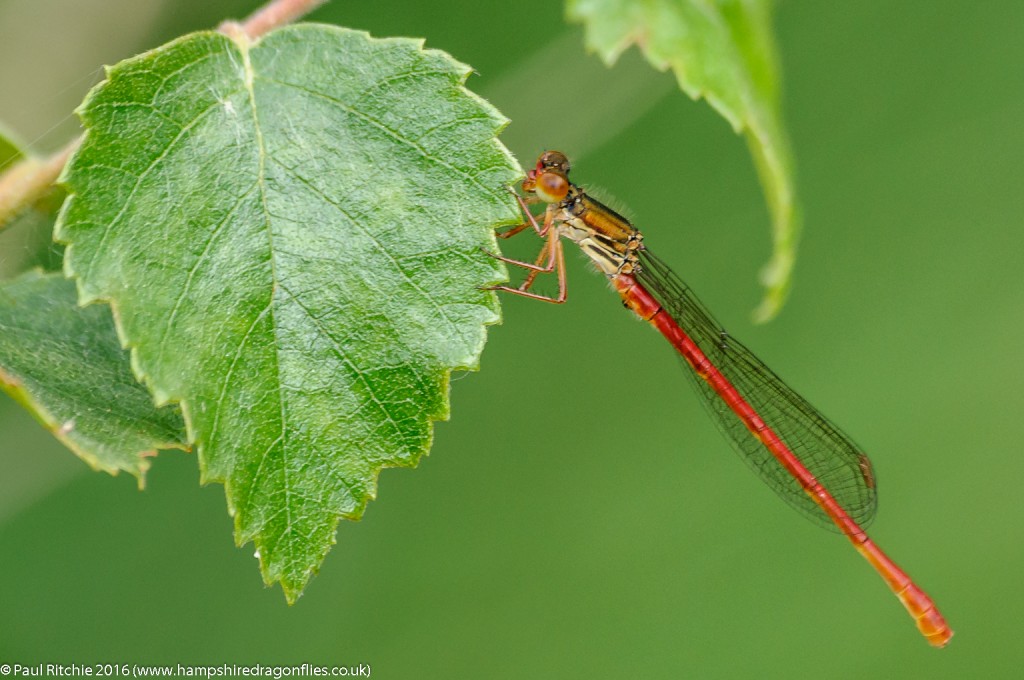
A false alarm as the unmistakable shape of a Darter rose, the size alone determining it as a Common. Still, that’s four species in a short while under challenging conditions.
Naturally the ponds were devoid of any activity, so I took a stroll along the tracks hoping I might find a roosting Hawker, but not today. No worries, the discovery of yet another pond I’d somehow managed to miss before kept my spirits high.
A cracking little pond it is too, for it was here I finally caught up with the Black Darter.
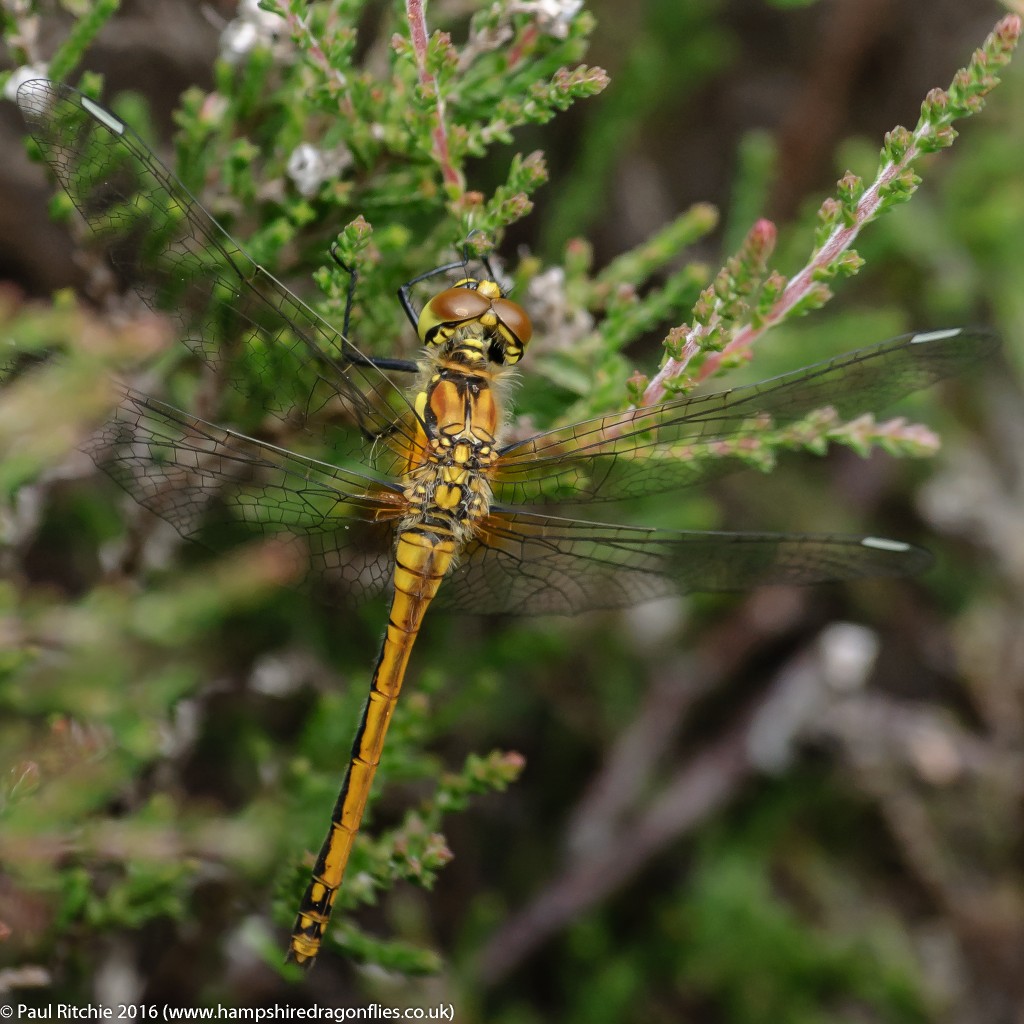
I almost missed it. The unmistakeable shape of an abdomen made me look twice. So well was she hidden down low in the heather that It made me question how many more I’d missed.
This find had given me a little boost of energy so I carried on under some brief sunshine before heading over to Ramsdown. Nothing of note here so should I dare attempt Troublefield? After all it is mid-June and the cattle are bound to be present.
Present they were, but thankfully in the top meadow where they should be. The key meadow was devoid of bovine presence and the gate was still unlocked, although there were some flattened areas which looked distinctly mammalian.
On the whole though it was pristine, tall grasses and reeds, beautiful wild flowers and the skies were alive with insects in this little sheltered paradise. The winds couldn’t penetrate here, and those brief moments of sunshine kept the temperature warm & humid.
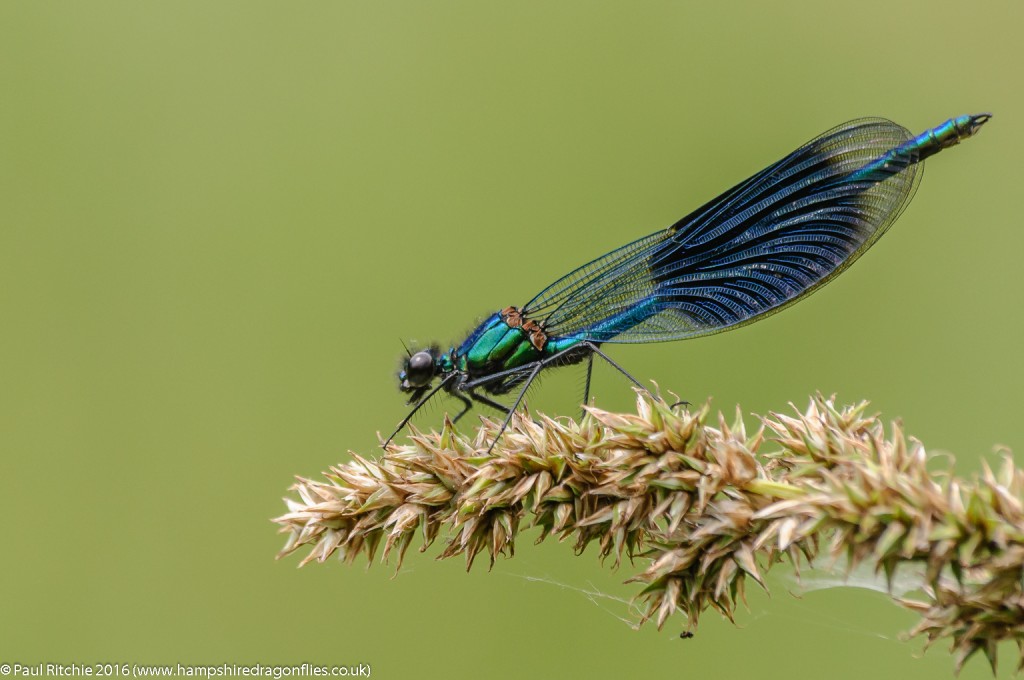
Banded and Beautiful Demoiselles were present in large numbers but it was the Scarce Chasers which impressed. At least twenty-five individuals added welcome colour and contrast in this sea of green.
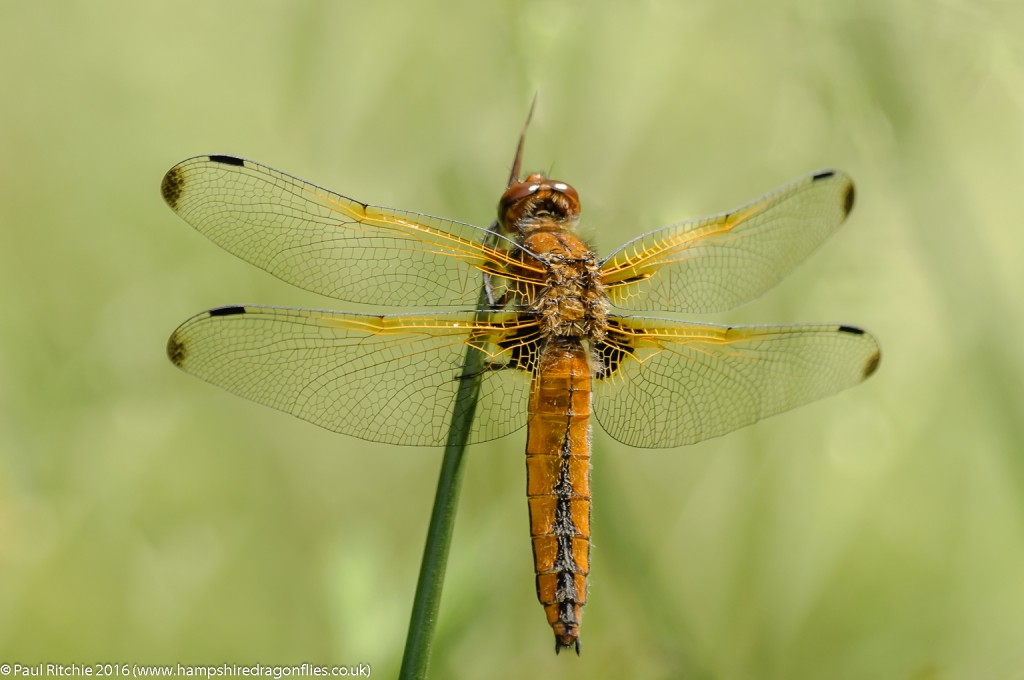
This is the most I’ve ever seen here, and is no doubt due to the meadow being allowed to develop. The sheer number of feeder insects and unrivaled shelter makes for a fabulous refuge, although I could do without the horseflies which certainly made a feast of me.
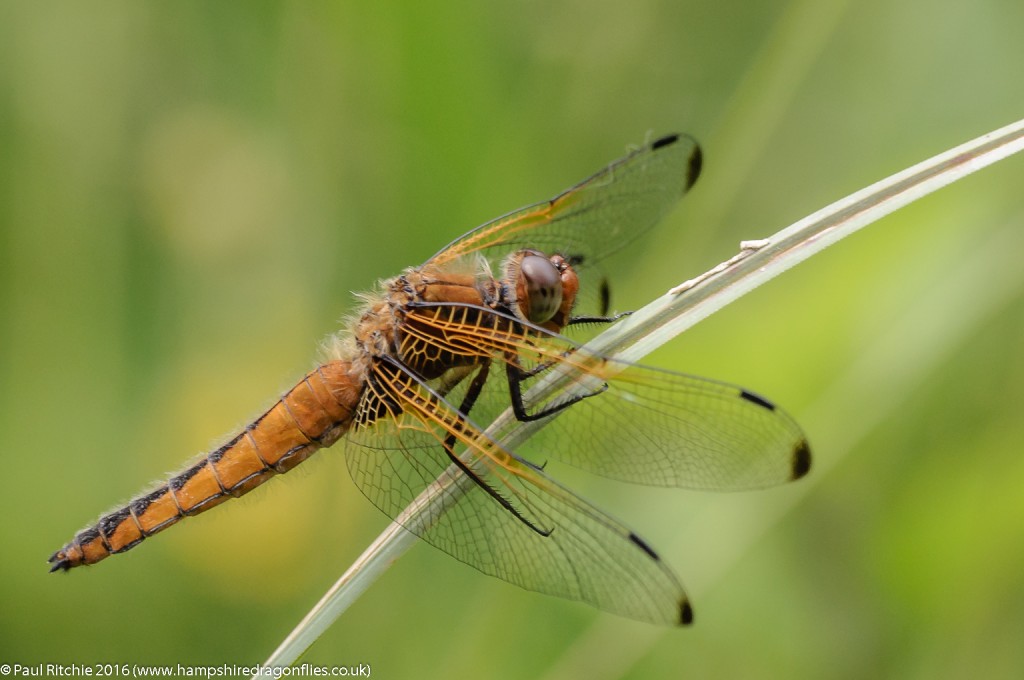
Horseflies aside, a very pleasant hour to round off the day nicely. In my opinion if you’re not prepared to experience the discomforts of nature you certainly don’t deserve the benefits.
